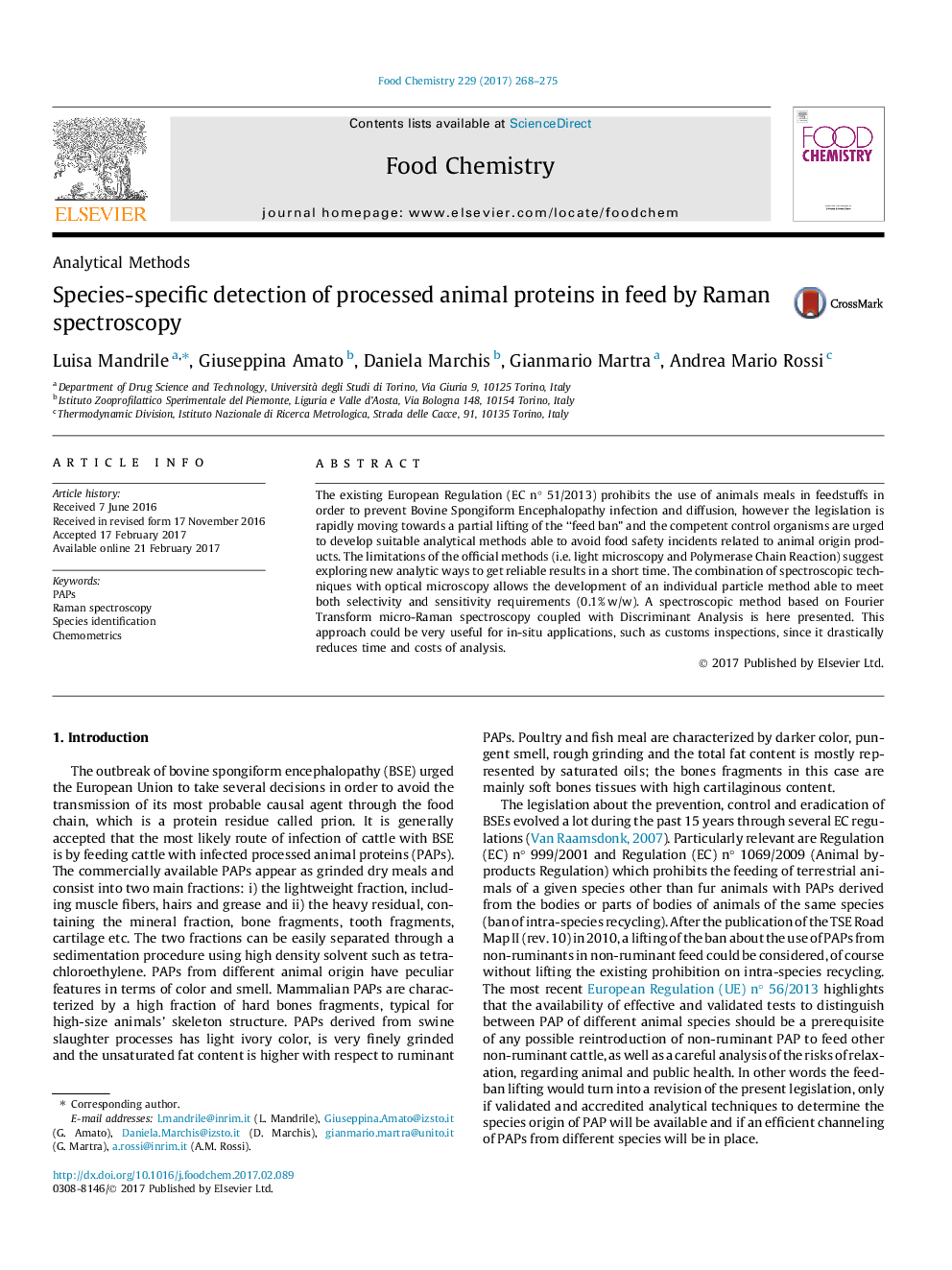| Article ID | Journal | Published Year | Pages | File Type |
|---|---|---|---|---|
| 5133686 | Food Chemistry | 2017 | 8 Pages |
â¢An innovative method to detect PAPs in feed by Raman spectroscopy is proposed.â¢Raman reaches the sensitivity required by European Regulations.â¢Using DA classification it is possible to identify the species of origin of PAP.â¢The method consists into a two-step procedure: screening and accurate analysis.â¢The two major advantages of Raman are non-operator dependence and time saving.
The existing European Regulation (EC n° 51/2013) prohibits the use of animals meals in feedstuffs in order to prevent Bovine Spongiform Encephalopathy infection and diffusion, however the legislation is rapidly moving towards a partial lifting of the “feed ban” and the competent control organisms are urged to develop suitable analytical methods able to avoid food safety incidents related to animal origin products. The limitations of the official methods (i.e. light microscopy and Polymerase Chain Reaction) suggest exploring new analytic ways to get reliable results in a short time. The combination of spectroscopic techniques with optical microscopy allows the development of an individual particle method able to meet both selectivity and sensitivity requirements (0.1% w/w). A spectroscopic method based on Fourier Transform micro-Raman spectroscopy coupled with Discriminant Analysis is here presented. This approach could be very useful for in-situ applications, such as customs inspections, since it drastically reduces time and costs of analysis.
